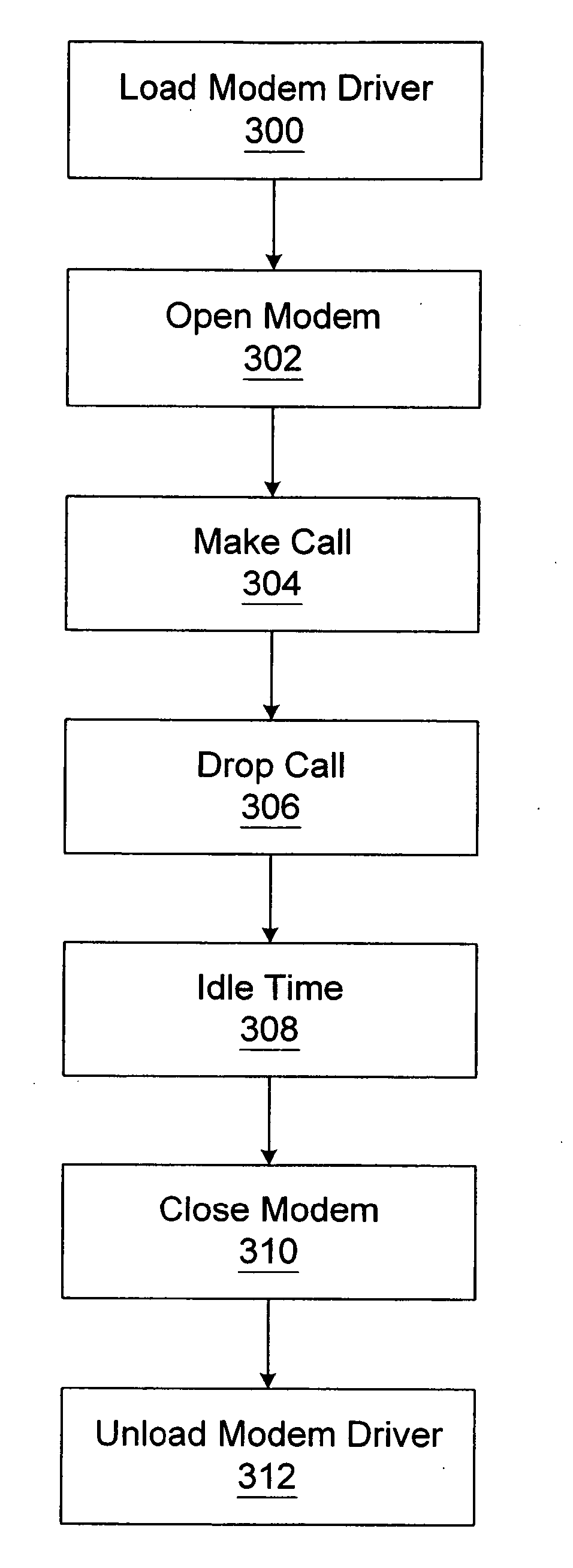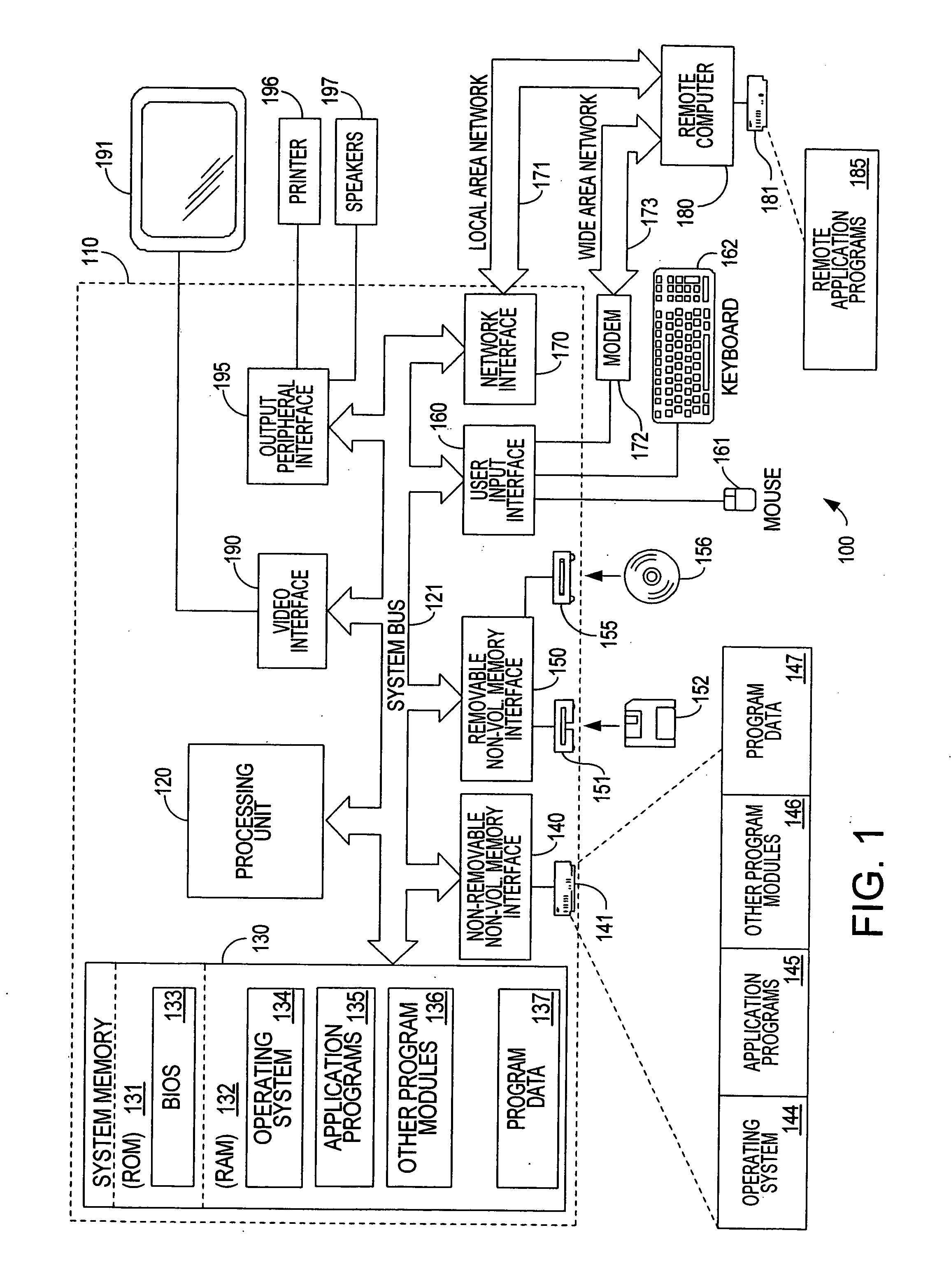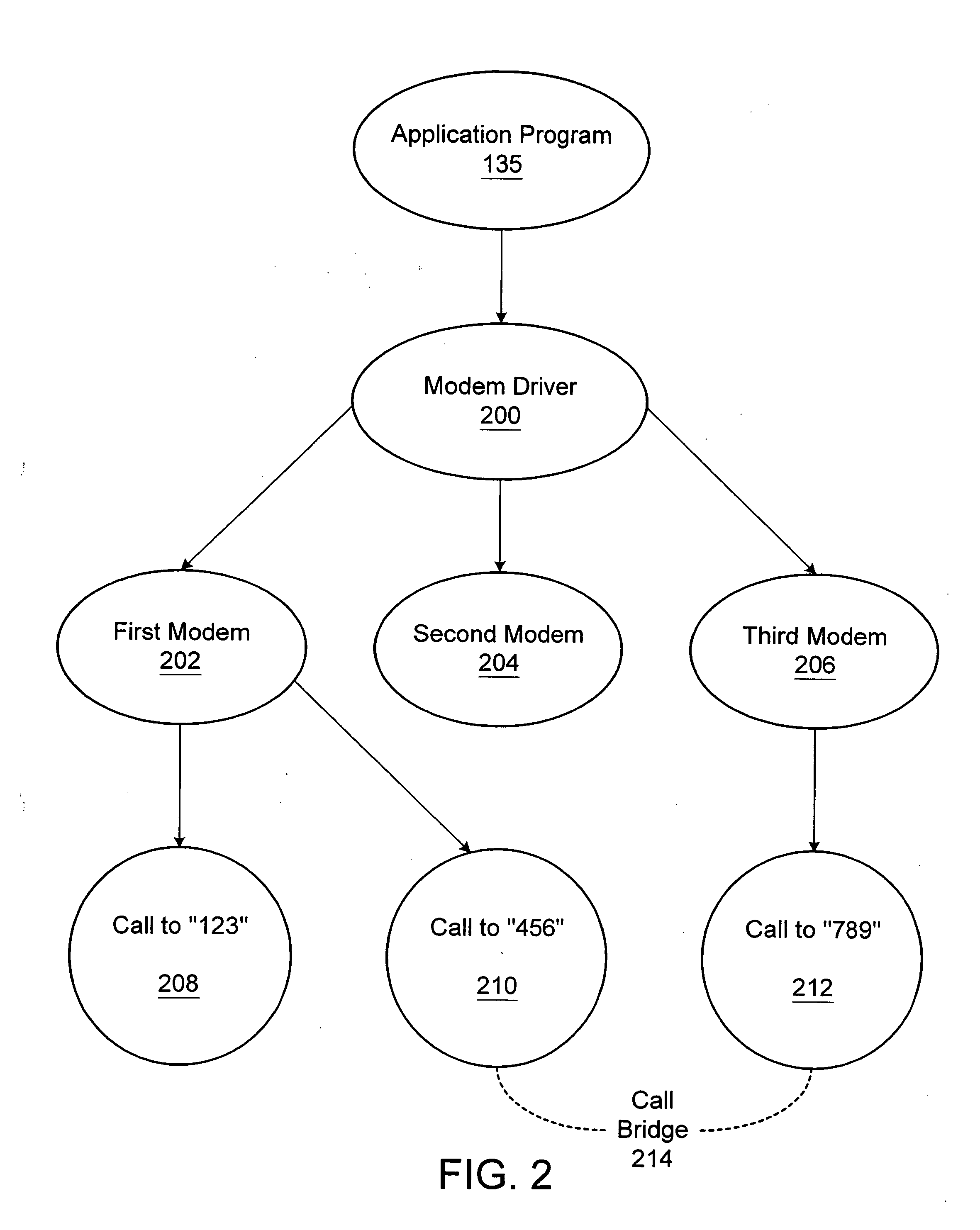Methods and systems for structuring asynchronous processes
a technology of asynchronous processes and methods, applied in the field of computer programming, can solve problems such as inability to write programs according to synchronous models, complex errors may arise from mismatches between one part of the program, and unpredictable program progression, so as to facilitate the process of debugging and maintaining, and the chance of miscounting or misapplication is lessened.
- Summary
- Abstract
- Description
- Claims
- Application Information
AI Technical Summary
Benefits of technology
Problems solved by technology
Method used
Image
Examples
Embodiment Construction
[0028] Turning to the drawings, wherein like reference numerals refer to like elements, the invention is illustrated as being implemented in a suitable computing environment. The following description is based on possible embodiments of the invention and should not be taken as limiting the invention in any way. The first section presents an exemplary hardware and operating environment in which the present invention may be practiced. Section II presents synchronous and asynchronous processing and highlights the differences between them. Section III describes how Input / Output Request Packets can be used to capture some of the structure of an asynchronous process. Sections IV through VII describe the Asynchronous Processing Environment (APE), an implementation of the present invention, showing how it captures the structure of an asynchronous process, counts object references, allows a group of objects to be treated as a group, and controls software locks. Debug associations are describ...
PUM
 Login to View More
Login to View More Abstract
Description
Claims
Application Information
 Login to View More
Login to View More - R&D
- Intellectual Property
- Life Sciences
- Materials
- Tech Scout
- Unparalleled Data Quality
- Higher Quality Content
- 60% Fewer Hallucinations
Browse by: Latest US Patents, China's latest patents, Technical Efficacy Thesaurus, Application Domain, Technology Topic, Popular Technical Reports.
© 2025 PatSnap. All rights reserved.Legal|Privacy policy|Modern Slavery Act Transparency Statement|Sitemap|About US| Contact US: help@patsnap.com



